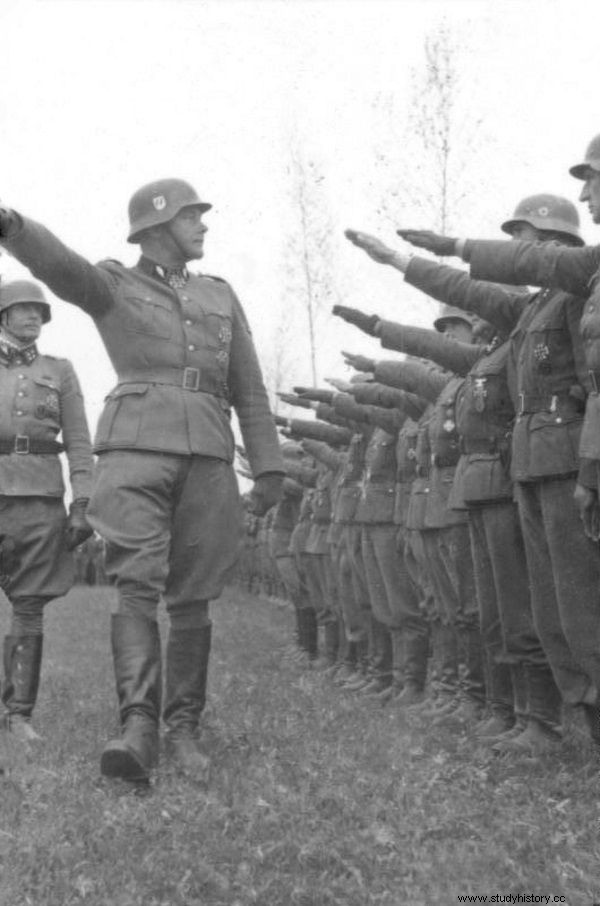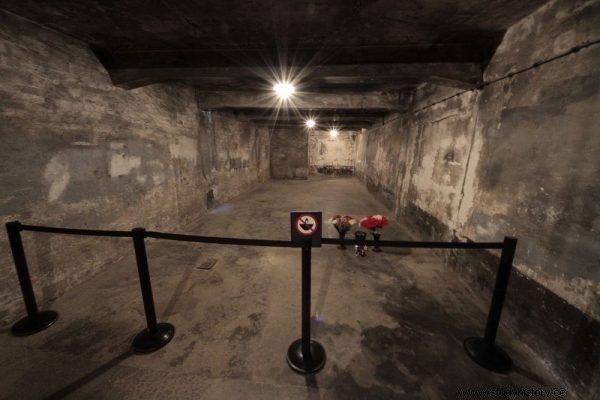Before the war:a polite Bayer sales representative who fussed over his Jewish customers. And then? A man who sent people to gas without batting an eye. And he personally gave the order to be thrown into the Zyklon-B chambers.
It is hard to believe what a change took place in Victor Capesius. Those who knew him before the war would never associate him with radical German nationalism and anti-Semitism. He himself recalled years later that ... in fact, he had nothing against the Jews. Before Hitler began his conquest of Europe, he worked as a sales representative for the IG Farben concern, and wealthy Jews - pharmacists, drug wholesalers and doctors - were his best customers. Years later, Holocaust survivors said that when he visited their homes or pharmacies, he was always kind, helpful, and the children he gave with company gadgets considered him a kind "uncle".
The same man who, after taking up a post in Auschwitz, was initially considered by the prisoners working with him to be friendly and understanding, soon became the worst monster. He went berserk for the slightest reason. And as Patricia Posner writes in her book "The Pharmacist from Auschwitz" , he yelled to inmates:
I am Capesius from Transylvania. Thanks to me you will know what Satan is.
Merchant to killer
Victor Capesius, who was born in 1907, was a Volksdoyan from Romania. He was even happy when he was transferred from Romanian to the German army on August 1, 1943. His ambition was to prove his German roots dating back to the 18th century, which would allow him to join the Waffen-SS. At the same time, he scrupulously concealed that according to Nazi views on race, his wife Fritzi was half Jewish.

Volunteers were sent to the Waffen-SS. The photo shows the inspection of the 2nd SS Panzer Division Das Reich (photo Bundesarchiv, Bild 101III-Hoffmann-04-23, Hoffmann, license CC-BY-SA 3.0)
After the training, Capesius became a full-fledged SS man. He completed his service in the camps in Sachsenhausen and in Dachau, where he met, among others, Dr. Lolling, who, obsessed with macabre things, collected "the most interesting" tattoos cut from the bodies of prisoners. Eventually, Capesius ended up in Auschwitz, where he became an assistant to Adolf Krömer, who could not cope with the function of the camp pharmacist. Folksdojcz from Transylvania quickly replaced his former superior, who was sentenced to death for defeatism on an ad hoc basis (the cause of a heart attack was of course entered on the death certificate).
Capesius was proud to be promoted to the chief pharmacist of Auschwitz . He quickly got rid of any remorse or dilemmas. Apart from ordering medical supplies for the entire death complex in Auschwitz, his daily duties also included conducting the selection, that is, playing the life and death of people pouring out of the cattle cars onto the camp ramp. When people he had known before the war showed up, without blinking an eye, he was able to first greet them pleasantly and then direct their families straight to the gas chambers.
The Kicker of Death
To successfully implement the plan for the "Final Solution of the Jewish Question", the Germans needed massive supplies of lethal agents, including phenol and the famous Zyklon-B. They were cared for by none other than Victor Capesius. One of the ex-prisoners of Nazi camps, a male nurse, estimated that 20,000 people had been killed with phenol injection, but it was not this substance that took the deadliest toll.
 Cyclone-B, designed as an insecticide, was used in the camp to mass murder people. The company that made this toxic drug even made a special order for the Nazis in which the irritating substance was removed from the cans containing the poison so as not to warn the victims prematurely. Although, years later, Capescius firmly denied that he had anything to do with the use of this measure, the witnesses testified quite differently. They claimed that he was not only acting as a keeper of the Zyklon-B supplies, but also dispensing a killer agent for gassing, or that he delivered it himself ... with a truck with Red Cross emblems .
Cyclone-B, designed as an insecticide, was used in the camp to mass murder people. The company that made this toxic drug even made a special order for the Nazis in which the irritating substance was removed from the cans containing the poison so as not to warn the victims prematurely. Although, years later, Capescius firmly denied that he had anything to do with the use of this measure, the witnesses testified quite differently. They claimed that he was not only acting as a keeper of the Zyklon-B supplies, but also dispensing a killer agent for gassing, or that he delivered it himself ... with a truck with Red Cross emblems .
The most devastating, however, is quoted by Patricia Posner in the book "The Pharmacist of Auschwitz" testimony of the folksy Roland Albert, Capesius' acquaintance from his youth, who also served in Auschwitz. The man saw the pharmacist drive up in a truck with red crosses, then:
Dr Capesius and Josef Klehr get off […] Klehr has four green tin cans in his hand. They both go to the green lawn above the gas chamber and put on gas masks. Then Klehr lifts the lid, but only when Capesius gave such an order - the order to kill must always be given by an SS doctor - Klehr breaks the patent closure of the can and pours coarse-grained contents, purple, crumbling mass into the opening. Zyklon-B.
Everything had to run like clockwork, or else a perfectly oiled death machine might lose efficiency. Sometimes, however, something went wrong. Dieter Schlesak in his book about the pharmacist from Auschwitz describes one such case. As the witness of the event, Dov Paisikovic, who saw Capesius that day, testified:
This man once came to the crematorium in a Red Cross car. And they went to the other side where the gas chamber was. They were throwing them in on the other side, not where… they were throwing them in from below. The man said, "Where's the can? Where is the cyclone? The chauffeur brings one can. She says, "Where's the other one?" To this this one, "I only brought one." It was the one who yelled at him and sent him, one more time ... to bring back the can.

Gas chamber in Auschwitz. The hole in the vault is invisible, through which Zyklon-B was poured on Capesius' orders (photo:Oleg Yunakov, license CC BY-SA 3.0)
Two cans of Zyklon-B were needed to murder 2,000 people who were chased into the gas chamber. In order to improve profitability, the SS experimented with the possibility of reducing the amount of poison. They tried with one can for 1,500 people. This little cost-cutting maneuver caused people to die long and in agony. So - according to hideous Nazi arithmetic - not "efficient" enough.
After the war, Capesius denied having anything to do with the extermination carried out at Auschwitz. Meanwhile, the aforementioned witness Dov Paisikovic testified that he had repeatedly seen the chief pharmacist at the crematorium. What's more, he also saw how, on Capesius' orders, Zyklon-B was dispensed from the pharmacy, with which people were later gassed.
Justice or a joke about justice?
The pharmacist from Auschwitz held his position until the liberation of the camp in 1945, after which he hid in Schleswig-Holstein. He was recognized by one of the former prisoners during a visit to Munich in 1946. The Americans arrested him, and then he was sent to a POW camp. However, he was released in 1947. He underwent denazification and in 1950 he opened a pharmacy in Göppingen.
To start his business, he used the so-called dental gold, i.e. gold obtained from the teeth of the camp victims during his stay in Auschwitz. The precious metal was torn from the jaws of the murdered and melted down. Capesius was sending gold bars to his sister, asking him to hide them. The criminal certainly thought that he was safe and could safely reach for the property stolen in Auschwitz. He miscalculated. One of the survivors and the first post-war Jewish prosecutor in Germany worked on bringing him to trial.
When the second Auschwitz trial began in 1963, Vitor Capesius was also held responsible. He sat on the dock of defendants, among others, next to the aforementioned Josef Klehr, with whom he gassed people. The court proceeded for two years, but the sentences did not satisfy the former prisoners in the least. Especially since some of the inmates were released after serving only a fraction of the sentence. Victor Capesius was sentenced to 9 years on August 20, 1965, and in 1968 ... was already at large. Although there was a large body of evidence in his case, and the testimonies of witnesses were overwhelming, a pharmacist from Auschwitz maintained his innocence until the end of his life. He died undisturbed in 1985.
Read the shocking story of Victor Capesius:
